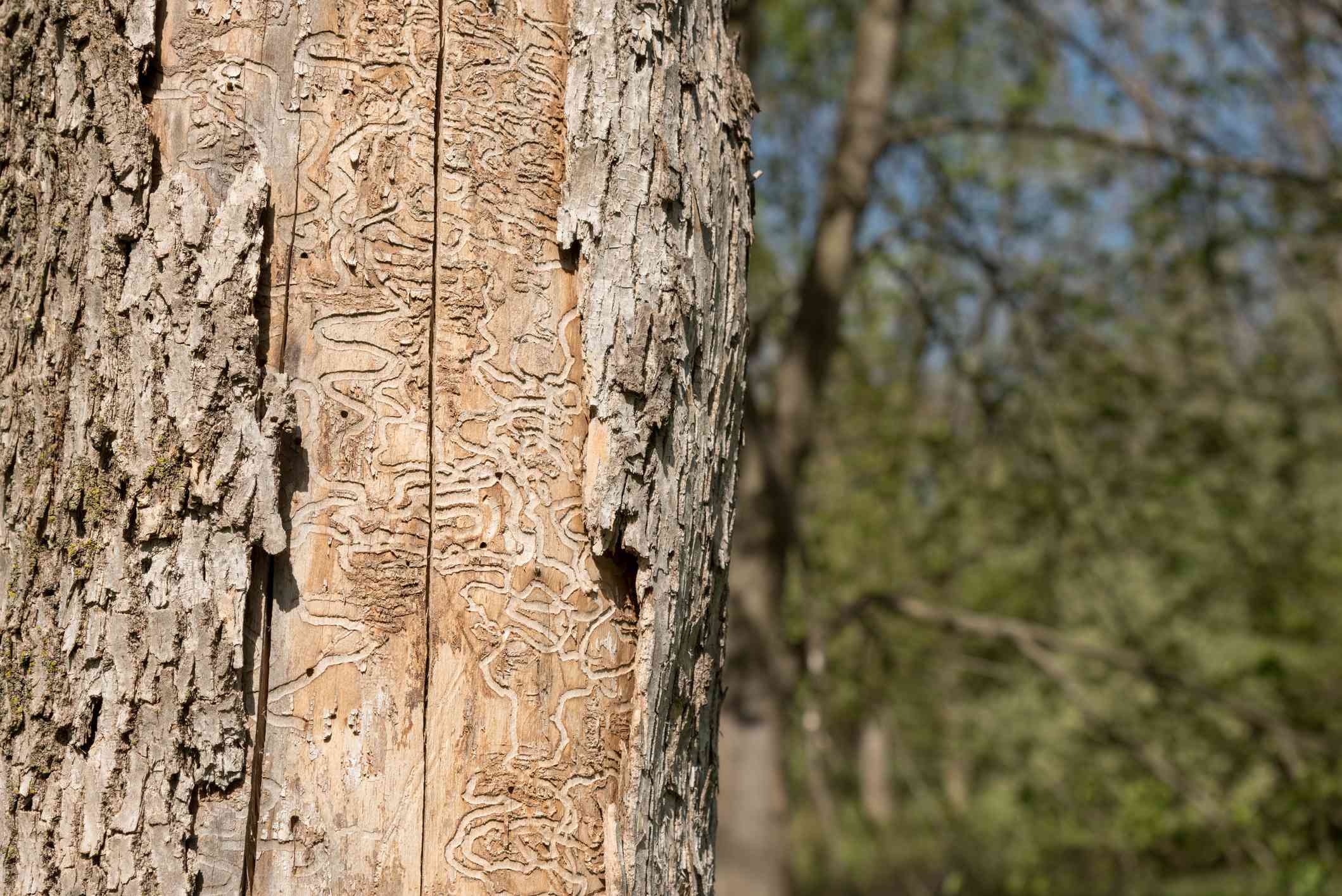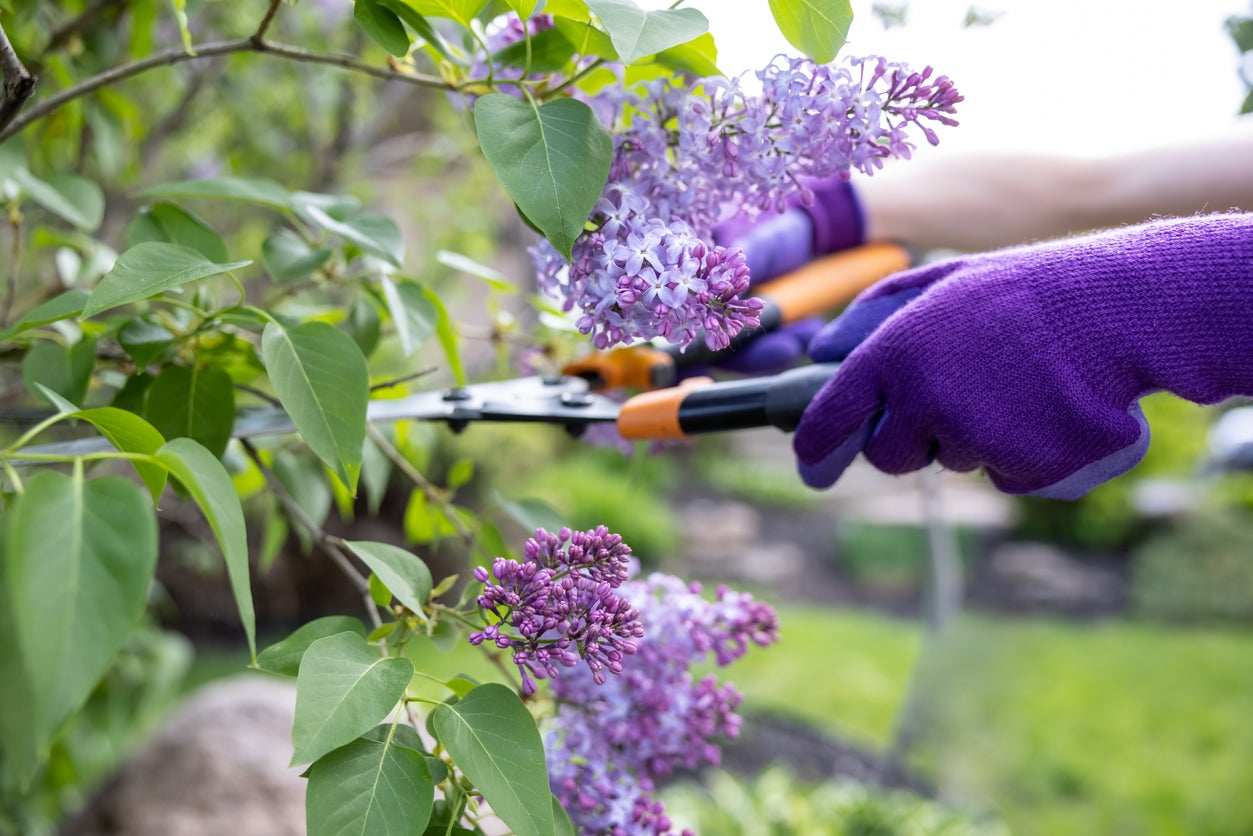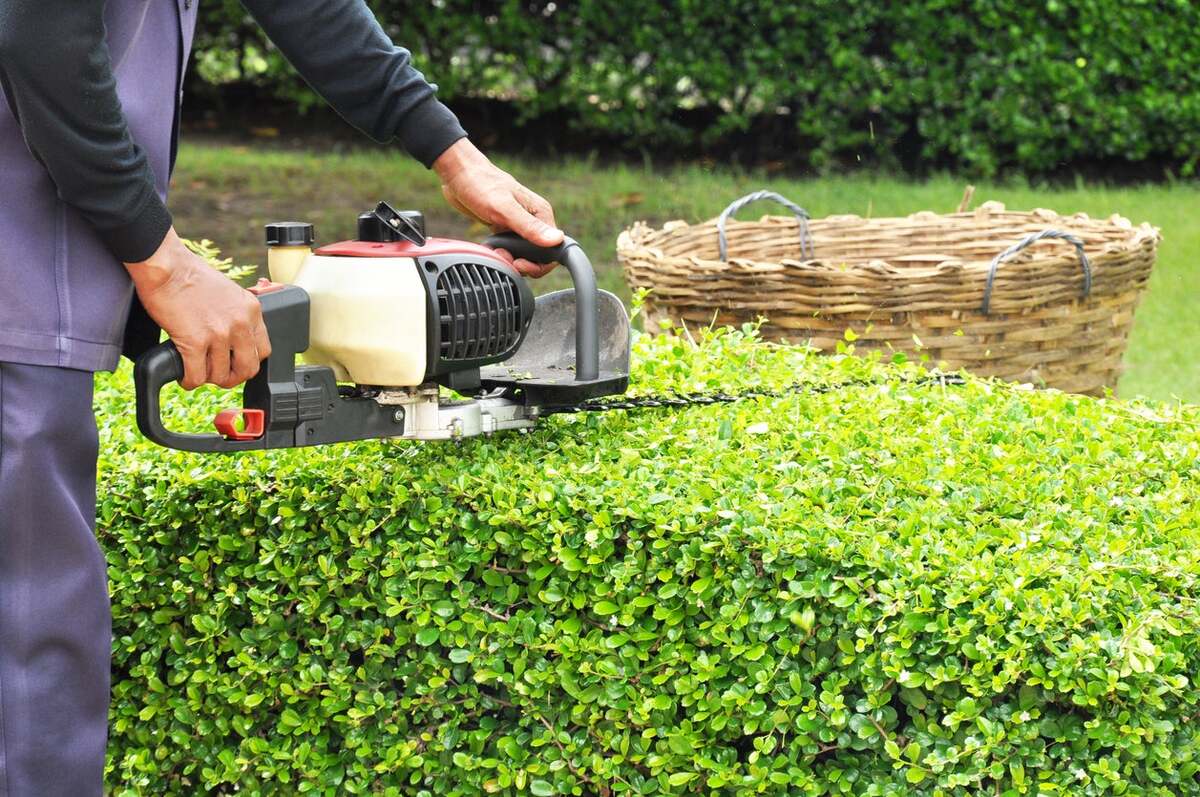Home>Gardening Tips and Tricks>Problem Solving>How To Revive Dying Shrubs


Problem Solving
How To Revive Dying Shrubs
Modified: January 22, 2024
Learn effective techniques and tips for reviving dying shrubs with our problem-solving guide. Restore life and vitality to your plants with expert advice.
(Many of the links in this article redirect to a specific reviewed product. Your purchase of these products through affiliate links helps to generate commission for Chicagolandgardening.com, at no extra cost. Learn more)
Table of Contents
- Introduction
- Assessing the Health of Shrubs
- Identifying the Causes of Dying Shrubs
- Providing Adequate Watering
- Pruning and Trimming Techniques
- Correcting Soil Issues
- Fertilizing Shrubs
- Protecting Shrubs from Pests and Diseases
- Dealing with Extreme Temperatures
- Rejuvenation Techniques for Dying Shrubs
- Conclusion
Introduction
Shrubs are an integral part of any garden or landscape, adding beauty and structure to the outdoor space. However, it can be disheartening to see your once vibrant and healthy shrubs start to decline, with leaves turning brown and branches becoming brittle. The good news is that there are steps you can take to revive dying shrubs and restore them to their former glory.
Reviving dying shrubs requires a combination of assessing their health, identifying the causes of decline, and implementing targeted care and maintenance techniques. By understanding the underlying issues and providing the right interventions, you can give your shrubs a fighting chance to thrive once again.
In this article, we will guide you through the process of reviving dying shrubs. We will explore various factors that contribute to their decline, such as inadequate watering, soil issues, pests and diseases, and extreme temperatures. You will learn practical techniques to address each of these factors and rejuvenate your shrubs.
It is worth noting that not all shrubs can be saved, especially if the damage is too severe or the root system is extensively damaged. However, by taking the necessary steps and providing proper care, you can greatly increase the chances of successfully reviving your dying shrubs.
So, if you’re ready to roll up your sleeves and give your shrubs a new lease on life, let’s dive into the process of reviving dying shrubs and transform your garden into a lush and vibrant oasis.
Assessing the Health of Shrubs
Before you can effectively revive dying shrubs, it is important to assess their current health and determine the extent of their decline. This assessment will help you understand the specific issues your shrubs are facing and guide your efforts in providing the appropriate care.
Start by observing the overall appearance of the shrubs. Look for signs of discoloration, wilting leaves, or dead branches. Take note of any abnormalities or changes in the plant’s growth pattern. Inspect the stems and branches for any signs of pests or diseases.
Next, examine the foliage and leaves. Healthy leaves should be vibrant, evenly colored, and free of spots or blemishes. If you notice yellowing, browning, or curling leaves, it may indicate a problem with watering, nutrient deficiency, or pest infestation.
Check the roots as well. Gently dig around the base of the shrub and examine the roots for signs of rot, damage, or inadequate growth. Healthy roots should be firm, white, and spread evenly throughout the surrounding soil.
Additionally, consider the overall growth and vigor of the shrubs. Healthy shrubs should have strong, well-developed branches and a balanced shape. If you notice sparse foliage, stunted growth, or an irregular shape, it could be an indication of underlying issues.
It is important to document your observations and take photos if necessary. This will help you track any changes in the shrubs’ condition as you implement the revival strategies.
By thoroughly assessing the health of your shrubs, you can gain valuable insights into the specific problems they are facing. This information will guide you in the subsequent steps of reviving your dying shrubs.
Identifying the Causes of Dying Shrubs
Once you have assessed the health of your shrubs, it’s time to identify the underlying causes of their decline. Understanding the factors contributing to their distress will allow you to address them effectively and prevent further damage.
The most common causes of dying shrubs include:
- Inadequate Watering: Shrubs may suffer from drought stress if they are not receiving enough water. Conversely, overwatering can lead to root rot and other fungal diseases. Assess the moisture levels of the soil and adjust your watering regimen accordingly.
- Soil Issues: Poor soil quality, improper drainage, or nutrient deficiencies can impact the health of shrubs. Conduct a soil test to determine its pH level and nutrient composition. Follow the recommendations to amend the soil and provide the necessary nutrients.
- Pests and Diseases: Insect infestations, fungal diseases, and other pests can wreak havoc on shrubs. Look for signs of pests like aphids, scale insects, or fungal infections like powdery mildew. Treat the affected shrubs with appropriate insecticides or fungicides.
- Extreme Temperatures: Shrubs may struggle to survive in harsh weather conditions, such as excessive heat or cold snaps. Take measures to protect your shrubs during extreme temperatures, such as using mulch, providing shade, or covering them with frost blankets.
- Improper Pruning: Incorrect pruning techniques or excessive pruning can weaken shrubs and make them more susceptible to disease and stress. Learn the proper methods of pruning and timing for your specific shrub species.
Identifying the specific causes impacting your dying shrubs is crucial in devising an effective revival plan. By addressing these underlying issues, you can give your shrubs the best chance of recovery and long-term health.
Providing Adequate Watering
One of the most common reasons for dying shrubs is inadequate watering. Proper watering is essential for the health and survival of shrubs, as it helps maintain the right moisture levels in the soil and ensures the uptake of essential nutrients.
Here are some tips to provide adequate watering for your shrubs:
- Establish a watering schedule: Determine how often your shrubs need to be watered based on their specific needs and environmental conditions. Factors such as the type of shrub, soil type, and weather patterns will influence the frequency of watering.
- Water deeply: When you water, make sure to provide enough water to soak the entire root ball. This encourages deep root growth and helps the shrub withstand dry periods.
- Use proper watering techniques: Avoid using sprinklers that mainly wet the foliage and contribute to fungal diseases. Instead, use a drip irrigation system or a soaker hose at the base of the shrubs to deliver water directly to the roots.
- Water in the morning: Watering in the early morning allows foliage to dry out during the day, reducing the risk of fungal diseases. It also ensures that the shrubs are hydrated before the heat of the day.
- Monitor soil moisture: Regularly check the moisture levels of the soil around your shrubs. Stick your finger into the soil or use a moisture meter to gauge if it’s time to water again. Aim for soil that is evenly moist, but not waterlogged.
- Consider mulching: Apply a layer of organic mulch, such as wood chips or compost, around the base of the shrubs. Mulch helps retain soil moisture, prevents weed growth, and maintains a more even soil temperature.
It’s important to note that different shrubs have different water requirements, so be sure to research the specific needs of your shrub species. Adjust your watering routine based on the soil conditions, weather patterns, and the overall health of the shrubs.
By providing adequate watering, you can help revive dying shrubs and promote their overall health and vitality.
Pruning and Trimming Techniques
Proper pruning and trimming techniques are essential for maintaining the health and appearance of shrubs. Pruning helps remove dead or diseased branches, promotes new growth, and improves the overall structure of the plant. By implementing these techniques, you can revive dying shrubs and encourage their rejuvenation.
Here are some pruning and trimming techniques to revive your dying shrubs:
- Remove dead or diseased branches: Start by identifying any dead, diseased, or damaged branches on your shrubs. Using clean and sharp pruning shears, make a clean cut just above the branch collar. This will promote healing and reduce the risk of further infection.
- Thin out overcrowded branches: If your shrub has dense growth, thinning out the branches can improve air circulation and sunlight penetration. Remove excessive crossing or rubbing branches to open up the shrub and promote healthier growth.
- Prune for shape and size: Trim back overgrown branches to maintain the desired shape and size of the shrub. Avoid drastic or excessive pruning, as it can shock the plant. Instead, follow proper pruning guidelines for your specific shrub species.
- Prune after flowering: For flowering shrubs, it’s best to prune them immediately after they finish flowering. This allows the shrub to set buds for the next season and ensures you don’t accidentally remove potential blooms.
- Remove suckers and water sprouts: Keep an eye out for suckers and water sprouts that grow from the base or interior of the shrub. These shoots can drain energy from the main plant, so promptly remove them to redirect energy towards healthier growth.
It’s important to note that not all shrubs require the same pruning techniques. Some shrubs, such as spring-blooming varieties, should be pruned immediately after they flower, while others, like summer-flowering shrubs, can be pruned in late winter or early spring before new growth starts.
Remember to sterilize your pruning tools between each cut, especially when dealing with diseased branches, to prevent the spread of infection. Additionally, avoid pruning during periods of extreme heat or drought stress, as it can further weaken the shrubs.
By implementing proper pruning and trimming techniques, you can rejuvenate dying shrubs, improve their overall appearance, and stimulate healthy growth.
Correcting Soil Issues
The health of shrubs is heavily influenced by the quality of the soil they are planted in. Poor soil conditions, such as improper pH levels, inadequate drainage, or nutrient deficiencies, can contribute to the decline of shrubs. Correcting soil issues is crucial in reviving dying shrubs and providing them with the necessary nutrients for growth.
Here are some techniques to correct soil issues and improve the overall health of your shrubs:
- Conduct a soil test: Perform a soil test to determine the pH level and nutrient composition of the soil. This will help you identify any imbalances or deficiencies that need to be addressed. Soil testing kits can be purchased from garden centers or you can send a sample to a professional lab for analysis.
- Adjust pH levels: Most shrubs thrive in slightly acidic to neutral soil conditions. If the soil is too acidic or alkaline, you can amend it by adding products like lime to raise the pH or sulfur to lower the pH. Follow the recommendations from the soil test for the appropriate amendments.
- Improve drainage: Poor drainage can drown the roots of shrubs and lead to root rot. If the soil is clay-heavy and retains water, consider incorporating organic matter like compost or well-rotted manure to improve the soil structure and drainage. Alternatively, create raised beds to ensure proper water drainage.
- Add organic matter: Adding organic matter to the soil improves its fertility and helps retain moisture. Incorporate compost, leaf mold, or aged manure into the top layer of soil around the shrubs. This will provide essential nutrients and improve overall soil health.
- Apply targeted fertilizers: Once you have identified nutrient deficiencies through soil testing, you can apply targeted fertilizers to meet the specific nutrient needs of your shrubs. Use slow-release fertilizers or organic fertilizers to provide a sustained and balanced nutrient supply.
- Mulch the soil: Applying a layer of organic mulch around the base of the shrubs helps conserve moisture, suppress weed growth, and regulate soil temperature. Use materials like wood chips, straw, or shredded leaves, and keep the mulch a few inches away from the trunk to prevent rot.
Regularly monitor and care for the soil around your shrubs to maintain optimal conditions. Regularly adding organic matter, testing the soil, and adjusting pH levels will promote healthy root growth and overall shrub vigor.
By correcting soil issues, you can significantly improve the chances of reviving dying shrubs and providing them with the necessary nutrients to thrive.
Fertilizing Shrubs
Fertilizing is a vital aspect of proper shrub care, as it provides essential nutrients that may be lacking in the soil. By supplying the right nutrients, you can boost the health and vitality of your shrubs, aiding in their revival and promoting vigorous growth.
Here are some tips for effectively fertilizing your shrubs:
- Understand your shrub’s nutrient needs: Different shrub species have varying nutrient requirements. Research the specific nutritional needs of your shrubs to determine the appropriate type and schedule of fertilization.
- Perform a soil test: Before fertilizing, consider conducting a soil test to determine any nutrient deficiencies or imbalances. The results will guide you in selecting the right fertilizer and identifying the required nutrient ratios.
- Choose the right fertilizer: Select a fertilizer with the appropriate NPK (nitrogen, phosphorus, and potassium) ratio for your shrubs. Slow-release fertilizers are often a good choice as they provide a gradual and steady supply of nutrients over time.
- Apply fertilizers at the right time: It is crucial to fertilize shrubs during the appropriate time in their growth cycle. Generally, it is best to fertilize in early spring before new growth begins. However, some shrubs may benefit from an additional application in late spring or early summer.
- Avoid overfertilization: It is important to follow the instructions on the fertilizer packaging to avoid overfertilizing. Overfertilization can lead to excessive growth, weak branches, and susceptibility to pests and diseases.
- Spread the fertilizer evenly: When applying fertilizer, spread it evenly around the base of the shrub, avoiding direct contact with the stem or foliage. Use a garden rake or your hands to lightly work the fertilizer into the top layer of soil.
- Water after fertilization: After applying fertilizer, water the shrubs thoroughly. This helps to distribute the nutrients and prevent potential root burn. It also helps the fertilizer to penetrate the soil and reach the root zone.
Remember that fertilizing should be done in conjunction with other care practices, such as proper watering, pruning, and soil improvement. Regularly monitor the health of your shrubs and adjust the fertilization schedule or type as needed.
Fertilizing your shrubs helps provide the essential nutrients they need for optimal growth and revival. With the right fertilization approach, you can promote the health and vigor of your shrubs, bringing them back to their full potential.
Protecting Shrubs from Pests and Diseases
Pests and diseases can significantly impact the health and survival of your shrubs. Protecting them from these threats is essential in reviving dying shrubs and ensuring their long-term well-being. By implementing preventive measures and promptly addressing any issues, you can safeguard your shrubs from pests and diseases.
Here are some tips for protecting your shrubs:
- Regular inspection: Regularly inspect your shrubs for signs of pest infestation or disease. Look for unusual spots, discoloration, distorted leaves, or visible pests. Early detection allows for timely intervention and minimizes the potential damage.
- Prune and dispose of affected branches: If you notice any branches or leaves affected by pests or diseases, promptly prune and dispose of them. This prevents further spread and potential reinfestation.
- Practice good garden hygiene: Keep the area around your shrubs clean and free from debris. Fallen leaves, dead plant matter, and other organic debris can act as breeding grounds for pests and diseases.
- Encourage beneficial insects: Attracting beneficial insects, such as ladybugs and lacewings, to your garden can help naturally control pest populations. Plant flowers that provide nectar and pollen, and avoid using broad-spectrum pesticides that harm beneficial insects.
- Apply appropriate pesticides: If necessary, use targeted and least-toxic insecticides or fungicides to control specific pests or diseases. Follow the instructions carefully and avoid overuse or application during flowering, when pollinators are active.
- Use physical barriers: Install barriers like netting or fencing to protect your shrubs from birds or larger pests. This can help prevent damage to leaves or fruits.
- Rotate plantings: Avoid planting the same shrub species in the same location year after year. This practice helps break the life cycle of pests and diseases that may have built up in the soil over time.
Prevention is key when it comes to protecting your shrubs from pests and diseases. Maintaining a healthy and balanced growing environment through proper care, including watering, pruning, and fertilizing, can also improve the shrubs’ resilience against pests and diseases.
Remember, it’s crucial to correctly identify the specific pest or disease affecting your shrubs before implementing any control measures. When in doubt, consult with a local garden expert or professional to ensure appropriate treatment.
By taking proactive steps to protect your shrubs from pests and diseases, you can play a significant role in reviving dying shrubs and maintaining their overall health and vitality.
Dealing with Extreme Temperatures
Extreme temperatures, whether it’s scorching heat or chilly cold, can take a toll on shrubs and contribute to their decline. Protecting your shrubs from these temperature extremes is crucial in reviving dying shrubs and ensuring their survival in challenging weather conditions.
Here are some strategies for dealing with extreme temperatures:
- Choose resilient shrub varieties: When selecting shrubs for your garden, consider choosing varieties that are known to be hardy and thrive in your climate. Native shrubs often have better tolerance to local temperature fluctuations.
- Provide shade for heat stress: If your shrubs are exposed to intense sunlight and high temperatures, consider providing temporary shade during peak hours. This can be done using shade cloth, umbrellas, or strategically-placed larger plants to protect them from the scorching sun.
- Water deeply and consistently: During periods of extreme heat, it’s crucial to provide your shrubs with adequate water. Deep watering helps the roots access moisture and stay hydrated. However, be cautious not to overwater, as waterlogged soil can cause root rot. Adjust your watering schedule to match the needs of your shrubs during hot weather.
- Mulch for temperature regulation: Applying a layer of mulch around the base of your shrubs helps regulate soil temperature, keeping it cooler in hot weather and protecting against frost in colder temperatures. Use organic mulch, such as wood chips or straw, to insulate the roots.
- Wrap or cover during freezing temperatures: In cold winter months, protect your shrubs from frost and freezing temperatures by wrapping them with burlap or covering them with frost blankets or even old bedsheets. This helps trap heat and minimizes frost damage.
- Monitor and adjust watering in extreme cold: Although it may be tempting to reduce watering during winter, check the soil moisture regularly and water if necessary. Dry soil is more prone to freeze damage, so it’s important to maintain adequate moisture levels.
- Utilize windbreaks: If your shrubs are exposed to harsh winds, consider creating windbreaks using fences, walls, or hedges. Windbreaks provide a barrier against strong gusts, reducing the risk of foliage damage and excessive moisture loss.
It’s important to keep in mind that not all shrubs have the same level of tolerance to extreme temperatures. Some may be more sensitive and require extra care. Research and understand the specific needs of your shrubs to provide the appropriate protection.
By implementing these strategies, you can minimize the impact of extreme temperatures on your shrubs and increase their chances of revival and long-term health.
Rejuvenation Techniques for Dying Shrubs
When shrubs reach a point of severe decline or appear beyond recovery, rejuvenation techniques offer a last-ditch effort to revive them. These techniques involve drastic measures to stimulate new growth and restore the health of dying shrubs. While not all shrubs may respond successfully, it’s worth trying these methods before considering removal.
Here are some rejuvenation techniques for dying shrubs:
- Hard pruning: One approach is to perform a hard pruning, which involves cutting back the shrub to a few inches above the ground. This severe pruning stimulates new growth from the base, effectively rejuvenating the shrub. However, it’s important to research the specific shrub species and its tolerance to hard pruning before attempting this technique.
- Coppicing or pollarding: Coppicing involves cutting the shrub entirely down to the ground, while pollarding involves removing the upper branches at a specific height. Both techniques promote vigorous regrowth from dormant buds and can revive shrubs. Again, research your specific shrub species to determine if it responds well to these techniques.
- Air layering: If a specific section of the shrub is healthy, you can try air layering to propagate new plants. Select a healthy stem, make a small incision, and apply a rooting hormone. Wrap the area with moist sphagnum moss, cover it with plastic, and secure it tightly. New roots will develop, and once established, you can separate the new plant from the parent shrub and replant it.
- Division: For shrubs that naturally form clumps or have multiple stems, division is an option. Dig up the entire shrub and carefully separate it into sections, ensuring each section has sufficient roots and foliage. Replant the divided sections in well-prepared soil with proper care and monitoring.
- Stem cuttings: Another approach is to take stem cuttings from healthy parts of the shrub and propagate new plants. Remove a 4- to 6-inch cutting, ensuring it has several leaf nodes. Dip the cut end in rooting hormone and plant it in a well-draining medium. Provide warmth, moisture, and indirect light until rooting occurs.
When employing rejuvenation techniques, it’s important to provide extra care and attention to the shrubs. Monitor water levels, protect new growth from extreme temperatures, and consider regular fertilization to support their recovery.
Keep in mind that not all shrubs may respond to these techniques, particularly if the root system is severely damaged or if the shrub is excessively stressed. It’s important to be patient and prepared for the possibility of limited or no success.
Before attempting any rejuvenation technique, carefully research and understand the specific requirements of your shrub species to maximize its chances of revival.
Conclusion
Reviving dying shrubs requires a combination of assessment, identification, and targeted care techniques. By taking the time to assess the health of your shrubs and identify the underlying causes of decline, you can implement the appropriate strategies to revive and rejuvenate them.
Throughout this article, we have explored various aspects of reviving dying shrubs, including assessing their health, identifying the causes of decline, providing adequate watering, pruning and trimming techniques, correcting soil issues, fertilizing, protecting from pests and diseases, dealing with extreme temperatures, and employing rejuvenation techniques.
It’s important to remember that not all dying shrubs can be saved, especially if the damage is extensive or the root system is severely compromised. However, by providing proper care, addressing underlying issues, and implementing the suggested techniques, you can greatly increase the chances of successfully reviving your shrubs.
When applying these techniques, it is crucial to continue monitoring the health of your shrubs, making adjustments as needed, and providing ongoing care and maintenance. Regular pruning, proper watering, soil amendments, and protection from pests and diseases will help maintain the health and longevity of your revitalized shrubs.
Remember to research and understand the specific requirements of your shrub species, as different shrubs have different needs and optimal growing conditions.
With patience, diligence, and a little green thumb magic, you can revive dying shrubs and transform your garden into a flourishing and vibrant oasis.









